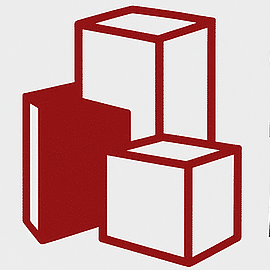
A bed frame is made of several interconnected parts that work together to keep it stable. Each section of the bed can be taken apart safely when done correctly. Taking the frame apart properly can help prevent scratches, save space during a move, and keep every piece protected. This blog explains the tools to use, how to clear your space, and the best way to handle each part safely, so you can complete the disassembly process without confusion or damage.
Benefits of Disassembling a Bed Frame
Here are a few benefits of disassembling a bed frame.
- Damage inspection and maintenance: Disassembling a bed frame provides a closer look at the bed, allowing you to spot cracks or loose parts before they worsen.
- Deep cleaning: When you take the frame apart, it becomes much easier to vacuum or wipe off the dust and debris that accumulate in the bed’s nooks and crannies and underneath it.
- Avoids getting stuck: Smaller pieces are easier to move through tight spaces and doorways without hitting walls or floors.
- Easier and safer transport: If you’re moving, taking the frame apart reduces weight and bulk.
- Prevents damage: Separate parts are less likely to bend or be scratched when packed and transported properly.
- Optimizes truck space: A disassembled bed frame takes up less room in a moving truck.
- Reduces moving costs: Compact and organized parts result in faster loading and fewer trips, which can lower overall moving costs.
- More compact storage: If you’re not setting up the bed right away, taking it apart makes it easier to fit into storage without wasting space.
- Protects the frame: Keeping components wrapped and separated reduces pressure on the joints and the finishes of the bed.
- Faster reassembly: When components are correctly disassembled, it’s easier to reassemble the frame later.
Tools to Disassemble a Bed Frame
Having the right tools before disassembling a bed frame makes the process faster and can prevent damage. Before you start, gather these items so you won’t have to stop midway looking for them.
Screwdriver
A screwdriver is used to remove screws that hold headboards, slats, or brackets in place. Most bed frames use Philips or flathead screws. Having both of these screwdrivers ready saves time and keeps you from damaging screw heads by using the wrong one.
Allen Wrench (Hex Key)
Metal or adjustable bed frames use hex bolts instead of regular screws. An Allen wrench fits these bolts precisely to loosen them without stripping the threads of the screw.
Wrench
A small adjustable wrench helps loosen and tighten nuts and bolts in bed frames that have metal side supports. It’s also useful for holding one end of a bolt steady while unscrewing the nut on the other side.
Zip-Top Bags or Containers
Use small zip-top bags or small containers to store screws, bolts, and washers. When you keep all of them in one place, it can help you prevent mix-ups and also make it easier to reassemble the bed later.
Marker and Tape
A marker and a piece of tape help you label the hardware bags or note which parts belong together to avoid any confusion when reassembling the bed.
Masking Tape and Labels
Masking tape can be used to hold smaller parts in place or attach labels directly to the bed components. This keeps track of which piece connects where.
Moving Blankets
Moving blankets protect wood or metal parts from scratches. Place moving blankets under larger components like headboards and rails after they’re removed, and wrap fragile surfaces to prevent dents during transport.
Gloves
Work gloves protect your hands from sharp edges, wood splinters, and pinched fingers. They also improve your grip when lifting slippery or polished surfaces.
Rubber Mallet
A rubber mallet helps to separate tight joints without damaging the finish. Tap gently around connectors to loosen them.
Pliers
Pliers are useful for pulling out small nails, bent screws, and metal pins that can’t be removed by hand. They also help with adjusting and holding bed pieces firmly in place.
Flashlight
A flashlight can help you see hidden screws or bolts under the frame or behind the headboard. It’s also important to have in dimly lit rooms and corners.
Hammer
A standard hammer can help remove wooden dowels or tap loose joints that are stuck. Use it carefully to avoid cracking the wood.
Vacuum or Brush
A vacuum or a brush helps to clean dust from under the bed and around the joints before disassembling it. It also keeps the workspace clean and prevents dirt from transferring later.
Pre-Move Checklist: Preparing a Bed Frame
Before taking the bed frame apart, these simple preparations can make the process easier. They can also help to protect both your furniture and the surroundings.
- Move nearby furniture or obstacles so you have enough space to move the bed frame easily.
- Remove the bedding, the pillows, and the mattress from the bed to reach the frame easily, to prevent items from getting dusty or torn in the disassembling process.
- To prevent scratches, lay down blankets, towels, or cardboard on the floor and place each component of the bed on them.
Step-by-Step Instructions: How to Disassemble a Bed Frame
Before disassembling your bed, make sure the area is clean and the tools you need are nearby. Then take the frame apart slowly, one section at a time.
1. Strip the Bed Completely
Take everything off the bed. Fold the bedding and pack it to keep it clean.
2. Remove the Mattress and the Box Spring
Lift the mattress and move it against a clean wall. Do the same with the box spring or the base if your bed has one.
3. Detach the Headboard and the Footboard
Check for the bolts and screws that attach the headboard and the footboard to the side rails. Detach them using the right tools, such as a wrench or a screwdriver, and lean both pieces against the wall on a soft surface, like a blanket, to prevent scratches.
4. Take Apart Side Rails and Slats
Loosen the bolts and the brackets that secure the side rails to the headboard and the footboard. Slide out any slats or panels resting between the rails. Keep all the hardware in labeled containers so they don’t get misplaced.
5. Disassemble Center Support and Legs
Many bed frames have a central support bar running from the middle with one or more legs attached. Unscrew these pieces and hold them steady to prevent any sudden drops. This part of the bed is heavy and usually made of metal, so handle it carefully.
6. Bundle and Protect Components
Place similar parts together once they’ve been removed. Wrap up each bundle of parts in a moving blanket or a soft cloth to prevent damage. Remember to keep the screws and the bolts in separate containers.
7. Wrap the Bed Frame
Use a moving blanket or a padded cover to wrap large wooden or metal sections. Secure the wrapping with tape to prevent it from becoming loose during loading or transportation.
8. Wrap the Mattress
Keep the mattress in a protective plastic cover or wrap it with a clean sheet. This step protects the mattress from getting dirty during moving or in storage. Try to keep the mattress upright to prevent it from bending, sagging, and becoming damaged.
Special Instructions for Specific Bed Frame Types
There are many types of bed frames, and they come apart in different ways. Knowing what to look for when taking them apart helps you to keep things safe and prevent damage.
Platform Bed Frames
Platform beds have a solid base or wooden slats instead of a box spring. To disassemble a platform bed, firstly remove the mattress and lift each slat carefully without cracking them. If your bed has drawers built into the base, empty them and slide them out if possible. Keep the frame panels together and wrap them in moving blankets to protect the corners.
Metal Bed Frames
Metal frames connect with nuts, bolts, or locking pins. Use the right wrench to loosen the joints and put the hardware in a small bag. Don’t force stuck bolts since they can bend the frame. Once the sections are apart, tie them together with tape or rope to prevent them from shifting during transport.
Adjustable Beds
Adjustable beds have electrical parts that control their movement. Always make sure to unplug the bed before taking it apart. Disconnect the power cord, the control box, and any cables that connect the two halves. Fold the moving sections carefully to keep the motors and the wiring safe. Wrap the frame in a thick blanket and carry it upright if possible.
Practical Tips for Bed Frame Moving and Storage
Once the bed frame is disassembled, storing the pieces correctly makes it easier to reassemble them later.
- Label components for reassembly.
- Protect delicate wood or upholstered parts during a move.
- Transport long rails and headboards securely.
- To avoid injuries, when lifting heavy pieces, use your legs, not your back.
- Wear gloves to avoid splinters and cuts while lifting parts of the bed frame.
- Put away the tools when they’re not in use to avoid tripping and damaging the furniture.
When to Call a Professional
Disassembling a bed frame can take a lot of time and effort if it has heavy wooden parts or built-in storage. If you’re short on time or worried about damaging your furniture, Serenity Moving Services can handle the work safely with the right tools and over a decade of experience to keep your move stress-free. Get in touch with us to schedule your move, and let our team take care of the heavy lifting for you. Customer satisfaction is our #1 priority!
Frequently Asked Questions (FAQs)
How long does it take to disassemble a bed frame?
It can take anywhere from 30 minutes to an hour to disassemble a bed frame, depending on its size and type, such as adjustable beds.
Can I disassemble a bed frame by myself?
Most standard bed frames can be taken apart by one person, but it helps to have a second person helping you when handling large or heavy sections.
Do I need special tools for a wooden vs. a metal frame?
They both use standard tools, but the specific tools they require are different. You’ll need a wrench for bolts in a metal frame and a screwdriver to take apart a wooden one.
How do I keep screws and bolts organized?
Use a small zip-top bag or a container to store hardware from each section of the bed frame, labeling them clearly.
Should I fully disassemble a metal bed frame before moving it?
Separating the parts can help to prevent bending or scratching while moving. It also makes the frames easier to fit through doors and into moving trucks.
My bed frame is squeaky. Will disassembling it help?
Taking the frame apart lets you check where the noise is coming from. Tightening loose bolts or adding small pads between metal joints after assembly often fixes the problem.
Can I move a bed frame without fully taking it apart?
You can, but it’s not recommended. When you fully disassemble your bed, it makes it easier to move and keep the bed frame, the walls, and the door frames safe from damage.






